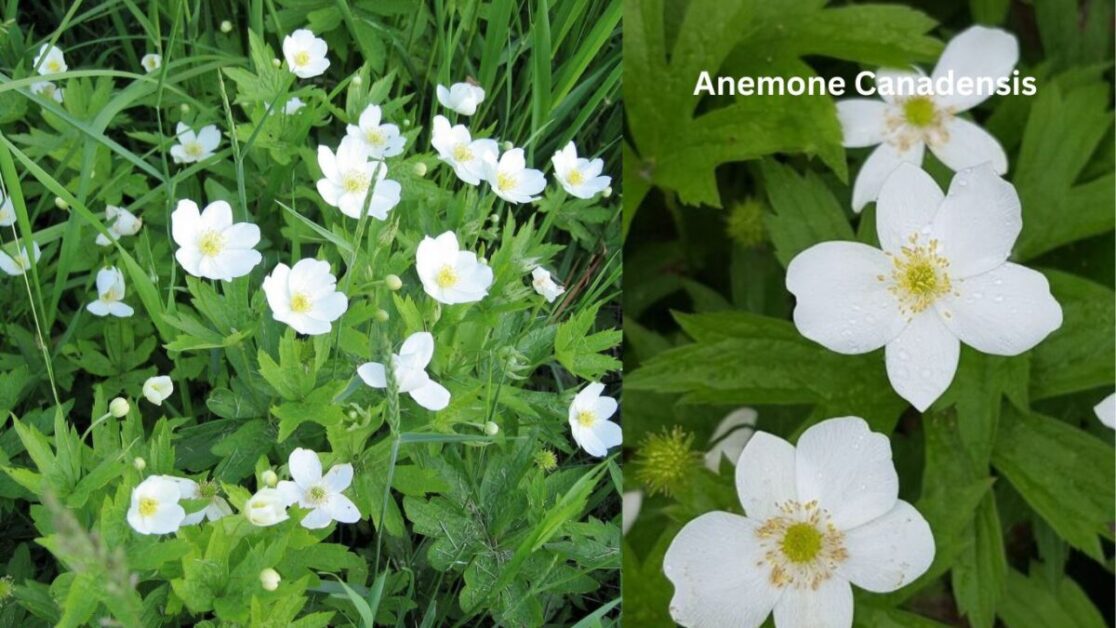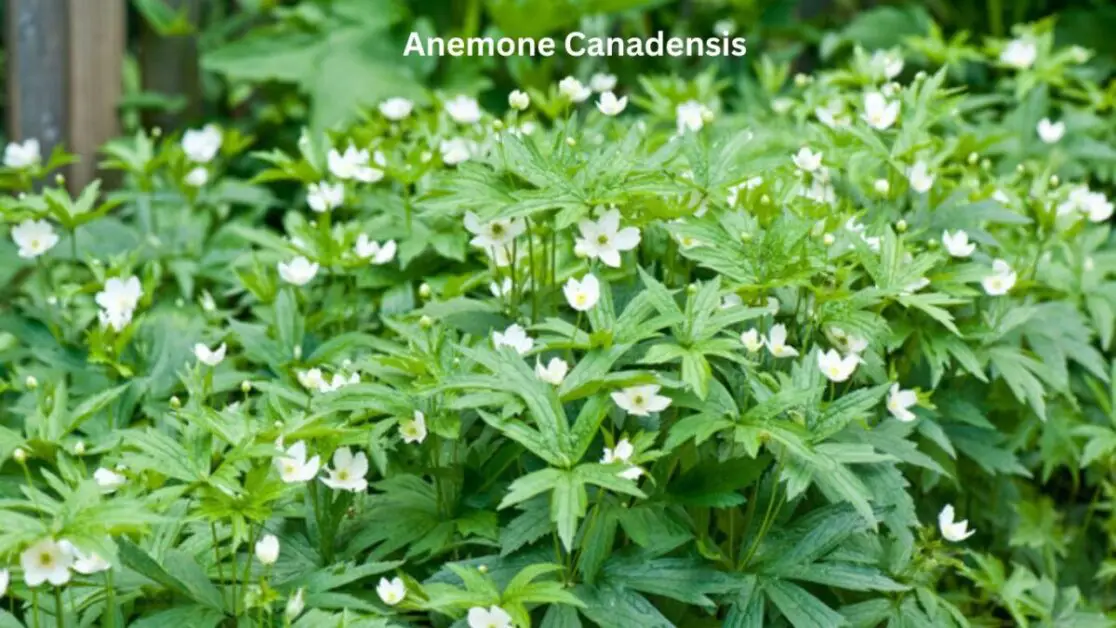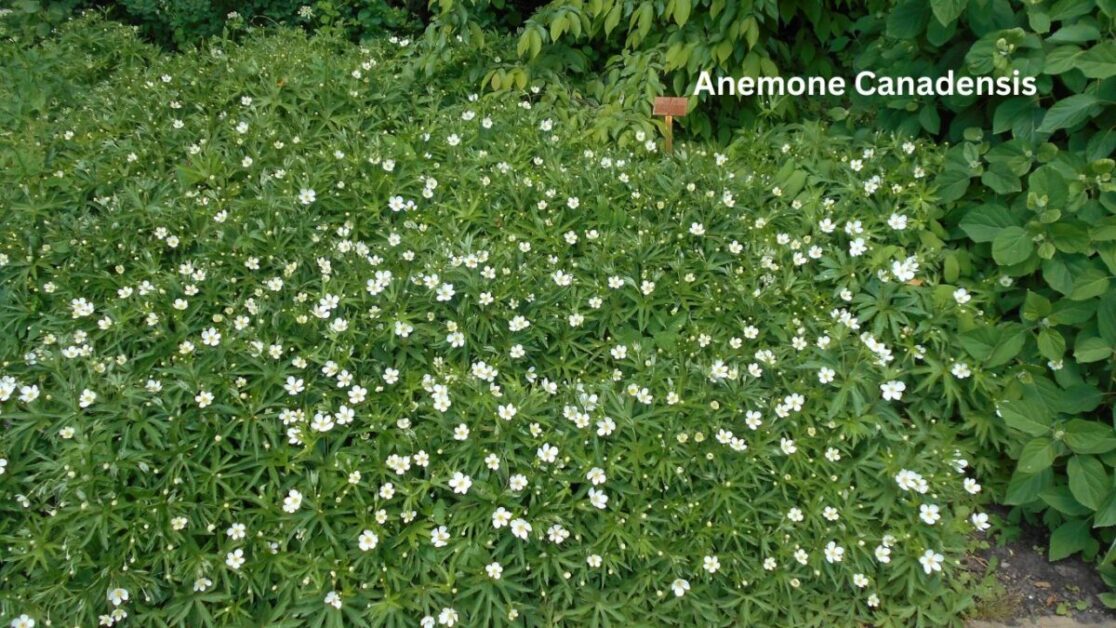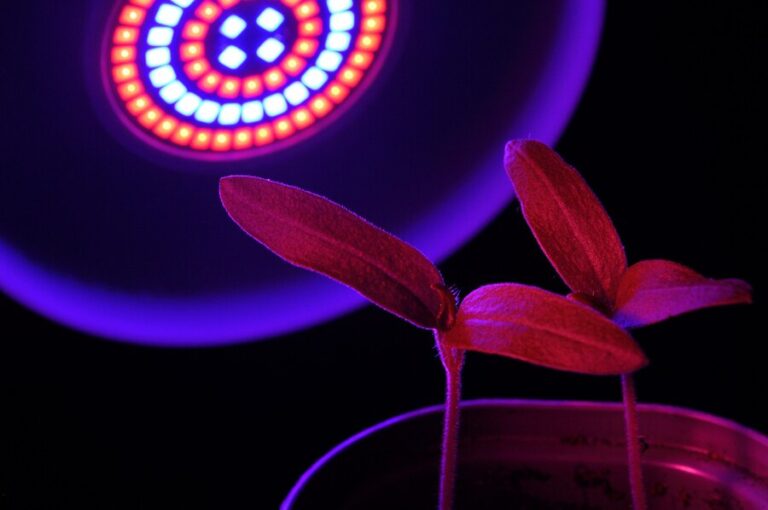Anemone Canadensis: Super Windflower Ground Cover Mastery
Table of Contents
Characteristics of Anemone Canadensis

Anemone Canadensis, commonly known as Canada anemone or meadow anemone, is a perennial flowering plant native to North America. This plant is characterized by its delicate white flowers with bright yellow centers, blooming in late spring to early summer, adding a touch of elegance to any garden landscape. Anemone Canadensis is a hardy plant that can grow in various soil types and climates, making it a popular choice for gardeners looking to add a touch of natural beauty to their outdoor space.
The foliage of Anemone consists of deeply lobed, dark green leaves that form dense mats, making it an excellent ground cover option. This plant typically reaches a height of 1 to 2 feet, creating a lush carpet of greenery that enhances the visual appeal of garden beds or borders. With its spreading rhizomatous growth habit, Anemone can quickly fill in empty spaces, providing a natural barrier against weeds while attracting pollinators such as bees and butterflies with its charming blooms.
Best Growing Conditions for Anemone Canadensis
Anemone canadensis thrives in well-drained soil with a slightly acidic to neutral pH level ranging from 6.0 to 7.0. It prefers rich, loamy soil that retains moisture without becoming waterlogged. To promote optimal growth, ensure the planting site has good air circulation and adequate spacing between plants. Additionally, incorporating organic matter into the soil can enhance its fertility and structure, providing essential nutrients for the plant’s development.
When it comes to sunlight requirements, Anemone flourishes in partial shade to full sun conditions. However, in regions with scorching summers, providing some afternoon shade can prevent the plant from wilting or experiencing heat stress. Finding the right balance of sunlight exposure tailored to your specific climate will contribute to the plant’s overall health and vigor.
Ideal Soil for Anemone Canadensis
Anemone canadensis thrives best in well-draining, loamy soil with a slightly acidic to neutral pH level ranging from 6.0 to 7.0. This species prefers soil that is rich in organic matter, providing essential nutrients for healthy growth and flowering. Compacted or heavy clay soils can hinder proper root development and lead to waterlogged conditions, which are detrimental to the overall health of anemone plants.
Additionally, incorporating compost or aged manure into the soil can enhance its texture and fertility, promoting robust growth and vibrant blooms. Ensuring proper soil moisture levels is crucial, as anemone prefers consistently moist but not waterlogged conditions. Adequate soil drainage is essential to prevent water stagnation, which can lead to root rot and other moisture-related issues. By understanding and addressing the soil requirements of anemone, gardeners can create an optimal environment for these enchanting perennial plants to thrive and beautify their outdoor spaces.
Sunlight Requirements for Anemone
Anemone Canadensis, commonly known as Canada anemone, thrives in a variety of sunlight conditions, making it a versatile plant for different garden settings. While this plant can tolerate partial shade, it truly flourishes in full sunlight. When grown in full sun, Anemone produces more abundant blooms and displays a lush, vigorous growth habit.
Providing at least 6 to 8 hours of direct sunlight daily is optimal for the health and vitality of Anemone. In regions with hot summers, some afternoon shade can help prevent stress on the plant. Understanding the sunlight requirements of Anemone Canadensis is essential for creating an environment where this resilient plant can showcase its full beauty and potential.
Watering Needs for Anemone Canadensis
Anemone Canadensis, also known as Canada anemone, is a resilient and adaptable plant that requires moderate watering for optimal growth. As a native perennial species, this plant has developed mechanisms to thrive in various environmental conditions. When it comes to watering, it is essential to strike a balance that prevents the soil from becoming waterlogged while ensuring adequate moisture levels for the plant’s health.
During the growing season, Anemone benefits from regular watering to support its robust growth and flowering. A general guideline is to water the plant thoroughly when the soil feels dry to the touch, typically once a week depending on rainfall and temperature conditions. Overwatering can lead to root rot and other issues, so it is crucial to monitor the plant and adjust the watering frequency based on its specific needs. By providing consistent moisture without waterlogging the soil, gardeners can help Anemone thrive and display its beautiful blooms with vigor.
Propagation Methods for Anemone Canadensis
Anemone canadensis can be propagated through division or by seed. Division is typically done in the early spring or fall when the plant is dormant. Carefully dig up the plant and separate the root ball into smaller sections, ensuring each division has both roots and shoots. Replant the divisions in well-draining soil and water thoroughly. Seed propagation involves collecting mature seeds from the plant in late summer to early fall. Sow the seeds in a seed-starting mix indoors and keep them moist until germination, which usually takes a few weeks. Transplant the seedlings outdoors once they have developed a few sets of true leaves.
Another method of propagating anemone is through rhizome cuttings. Cut a healthy rhizome into sections, making sure each piece has at least one bud. Plant the cuttings in a mixture of peat and perlite, and keep them consistently moist until they establish roots. This method can be done in the early spring or fall for best results. Rhizome cuttings offer a quick way to increase your anemone population and can be a reliable method if done correctly.
Common Pests and Diseases of Anemone Canadensis
Anemone Canadensis, also known as Canada anemone, is a robust and resilient plant; however, it is susceptible to some common pests and diseases that can affect its health and growth. One of the primary pests that gardeners may encounter when cultivating Anemone Canadensis is aphids. These tiny insects feed on the sap of the plant, leading to curling leaves and stunted growth. To combat aphids, gardeners can introduce natural predators like ladybugs or use insecticidal soap to minimize their population.
Another common issue that can plague Anemone is powdery mildew, a fungal disease that manifests as a white powdery coating on the leaves. This disease thrives in humid conditions and can weaken the plant if left untreated. To prevent powdery mildew, ensure proper air circulation around the plant, avoid overhead watering, and consider applying fungicidal treatments as a preventive measure.
Benefits of Using Anemone as a Ground Cover

Anemone Canadensis stands out as an exceptional choice for ground cover in various garden settings. With its dense foliage and delicate white blooms, this plant adds a touch of elegance while providing numerous benefits to the landscape. As a ground cover, Anemone Canadensis helps to suppress weed growth, reducing the need for frequent maintenance and weeding in the garden. Its spreading nature allows it to form a thick carpet that effectively shades the soil, helping to retain moisture and prevent erosion. This not only contributes to the overall health of the garden but also creates a visually appealing and cohesive look.
Moreover, the use of Anemone Canadensis as a ground cover can play a vital role in supporting local pollinators and beneficial insects. The flowers of this plant attract bees, butterflies, and other pollinators, promoting biodiversity and ecological balance in the garden. By providing a source of nectar and habitat for these creatures, Anemone Canadensis contributes to the overall environmental health of the garden ecosystem. Additionally, the presence of these pollinators can enhance the productivity of nearby plants, leading to a more thriving and vibrant garden landscape.
Maintenance Tips for Anemone
To keep your Anemone Canadensis thriving, regular maintenance is essential. Regular deadheading of spent flowers will encourage continuous blooming throughout the growing season. Trim back any yellowing or damaged foliage to promote healthy growth and prevent the spread of diseases. This plant benefits from a layer of mulch around its base to retain moisture and suppress weeds, but be sure not to smother the plant by applying it too thickly.
Anemone Canadensis is relatively low-maintenance, but it will benefit from periodic division every 3-4 years to rejuvenate overcrowded clumps and promote vigorous growth. Spring or fall is the best time for division when the plant is less stressed. Simply dig up the clump, separate the rhizomes, and replant them in well-prepared soil. Regular watering during dry spells and fertilizing in early spring with a balanced fertilizer will help keep your Anemone Canadensis healthy and blooming abundantly.
Seasonal Care for Anemone Canadensis
As the seasons change, it is crucial to adjust your care routine for Anemone to ensure its optimal growth and health. During the spring months, focus on providing adequate water to support new growth and blooming. This is a critical time for the plant as it emerges from winter dormancy and begins its active growing period. Consider mulching around the base of the plant to help retain moisture and suppress weed growth, aiding in the overall health of your Anemone.
Moving into the summer season, monitor the plant closely for any signs of stress such as wilting or drooping leaves, which may indicate a need for more frequent watering. Be mindful of extreme heat conditions, as Anemone may benefit from some shade during the hottest parts of the day. Deadheading spent blooms can help promote continuous flowering throughout the summer months, enhancing the visual appeal of this beautiful ground cover in your garden.
Alternative Uses for Anemone Canadensis
Anemone canadensis, commonly known as Canada anemone, is a versatile plant with various alternative uses beyond its ornamental value in gardens. One interesting application is its utilization in traditional medicine practices. Native American tribes historically used various parts of the plant for medicinal purposes, treating afflictions like coughs, fevers, and wounds. The root of Anemone contains bioactive compounds that exhibit antimicrobial and anti-inflammatory properties, making it a valuable resource in natural remedies.
Furthermore, Anemone canadensis can be incorporated into culinary practices, although with caution due to potential toxicity. The young leaves of the plant can be foraged and used in small quantities as a potherb or added to salads for a touch of bitterness. However, it’s essential to note that some individuals may be sensitive to the plant’s compounds, so moderation and proper preparation are key when exploring this alternative use. Despite its potential risks, the culinary experimentation with Anemone opens up a realm of creativity for those interested in exploring unconventional edible plants.
Companion Plants for Anemone Canadensis
Anemone Canadensis, also known as Canadian anemone, is a versatile perennial that can thrive alongside various companion plants in the garden. When choosing companions for Anemone Canadensis, it is essential to consider plants that share similar growing conditions and complement its delicate beauty.
One excellent companion for Anemone Canadensis is Astilbe, a shade-loving plant that offers a striking contrast with its feathery plumes of flowers. Both plants prefer moist, well-draining soil and thrive in partial shade, making them ideal partners in a woodland garden or a shady border. Additionally, the vibrant blooms of Astilbe can enhance the understated elegance of Anemone Canadensis, creating a visually appealing display throughout the growing season.
Design Ideas for Incorporating Anemone in Your Garden
Anemone Canadensis, with its delicate white flowers and low-growing habit, is a versatile plant that can be a charming addition to various garden designs. One design idea for incorporating Anemone in your garden is to plant them along the edges of pathways or walkways. Their dainty flowers can create a whimsical and inviting feel, guiding visitors along the garden while adding a touch of elegance. Another way to showcase the beauty of Anemone is by planting them in clusters or drifts in flower beds or borders. This method can create a more impactful visual display, allowing the delicate blooms to stand out against the green foliage and other plants in the garden.
For a more natural look, consider planting Anemone in a woodland or shaded garden area. Their preference for partial shade makes them an excellent choice for underplanting trees or larger shrubs, adding a soft and ethereal quality to the landscape. Additionally, mixing Anemone with other shade-loving plants like hostas, ferns, or astilbes can create a harmonious and balanced planting scheme, enhancing the overall beauty of the garden. Whether used as a border plant, a focal point, or as part of a mixed planting scheme, Anemone can bring a touch of grace and charm to any garden design.
Historical Significance of Anemone Canadensis

Anemone Canadensis, commonly known as Canadian anemone or meadow anemone, holds a rich historical significance dating back to the times of early North American settlers. Indigenous peoples utilized various parts of the plant for medicinal purposes, such as treating ailments ranging from fevers to digestive issues. The Cherokee tribe, in particular, valued the root of Anemone Canadensis for its purported healing properties, incorporating it into their traditional medicine practices. The plant’s resilience and ability to thrive in diverse environmental conditions made it a valuable resource for both practical and cultural reasons among different indigenous communities.
As European settlers began to explore and colonize North America, they too recognized the significance of Anemone Canadensis. The plant’s delicate white flowers and lush foliage captivated early botanists and horticulturists, who appreciated its aesthetic appeal in gardens and natural landscapes. As a result, Anemone Canadensis became a popular ornamental plant, spreading beyond its native habitats across the continent. Its presence in historical documents and botanical records showcases the enduring allure and adaptability of this perennial wildflower.
Below is a simple table providing information about Anemone, commonly known as Canada anemone:
| Attribute | Description |
|---|---|
| Scientific Name | Anemone canadensis |
| Common Name | Canada anemone |
| Family | Ranunculaceae |
| Native Range | North America (primarily Canada and |
| northern United States) | |
| Habitat | Moist meadows, woods, stream banks, |
| and open forests | |
| Description | Perennial herbaceous plant with |
| lobed leaves and solitary white | |
| flowers on long stalks | |
| Bloom Time | Late spring to early summer |
| Growing Conditions | Full sun to partial shade, moist, |
| well-drained soil | |
| Uses | Ornamental garden plant, attracts |
| pollinators, can be invasive in some | |
| areas |
This table offers a brief overview of the key characteristics and information about Anemone canadensis.
Environmental Impact of Growing Anemone Canadensis
Growing Anemone Canadensis can have a positive environmental impact due to its ability to attract pollinators such as bees and butterflies. These pollinators play a crucial role in ecosystem health by facilitating the reproduction of various plant species. Additionally, Anemone Canadensis is a native plant in many regions, which means it is well-adapted to the local climate and soil conditions, reducing the need for excessive water usage and chemical inputs that can harm the environment.
On the other hand, it’s important to note that improper cultivation of Anemone Canadensis can lead to unintended consequences on the environment. For example, overplanting this species in non-native habitats can disrupt the natural balance of plant communities and outcompete native vegetation. It’s essential for gardeners and landscapers to be mindful of the ecological context when introducing Anemone Canadensis to ensure that its growth does not have detrimental effects on the surrounding biodiversity.
Is Anemone Canadensis invasive?
No, Anemone Canadensis is not considered invasive. It is a native plant that benefits the local ecosystem.
How does growing Anemone help the environment?
Growing Anemone Canadensis can help support pollinators and wildlife by providing food and habitat. It also helps prevent soil erosion and can improve soil health.
Can Anemone Canadensis be used to attract beneficial insects?
Yes, Anemone can attract beneficial insects such as bees and butterflies, which can help with pollination in your garden.
Does Anemone Canadensis require any special maintenance to thrive?
Anemone is a low-maintenance plant, but it may benefit from occasional watering during dry periods and mulching to retain moisture.
Are there any negative environmental impacts of growing Anemone?
No, growing Anemone Canadensis is generally beneficial for the environment. However, it is important to ensure that it does not spread to natural areas where it could outcompete native species.







